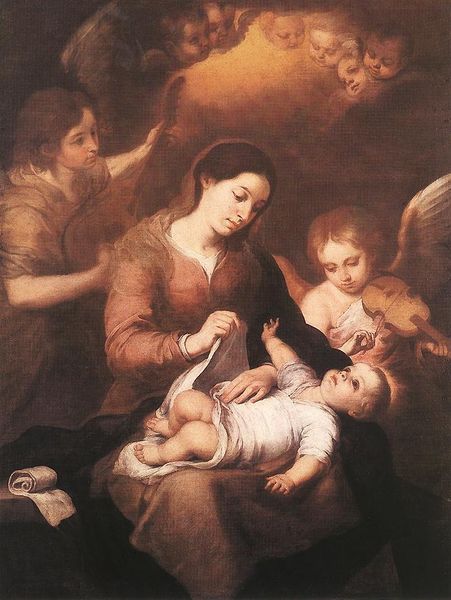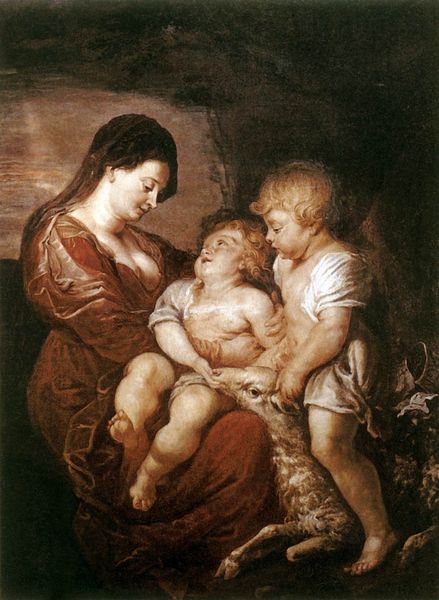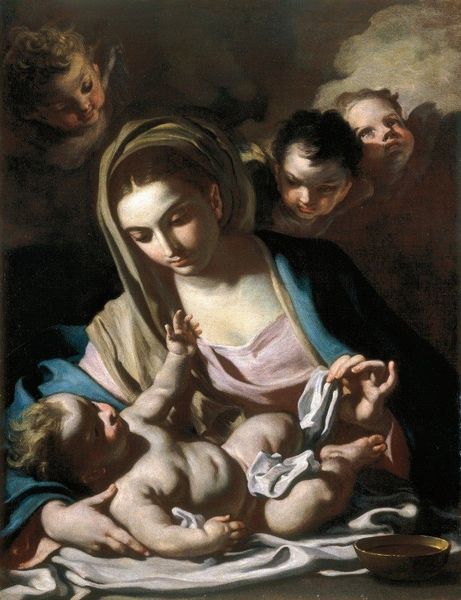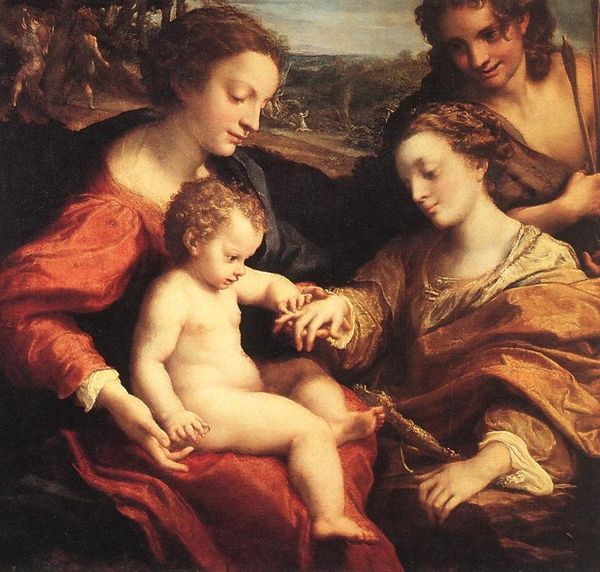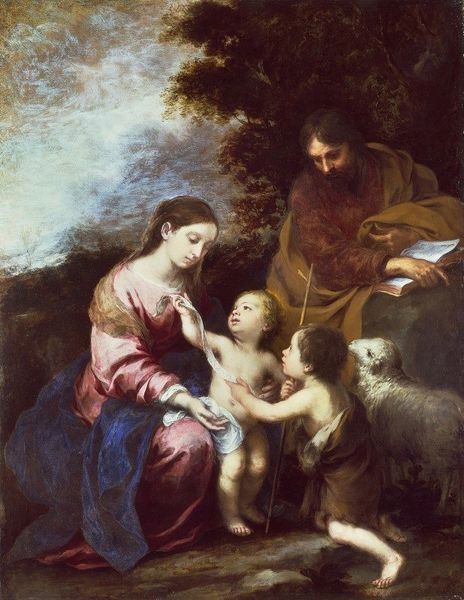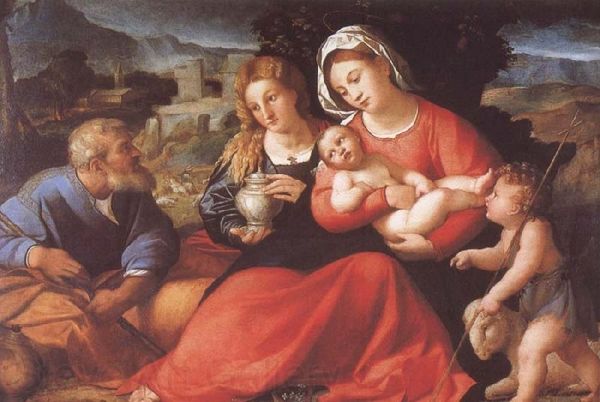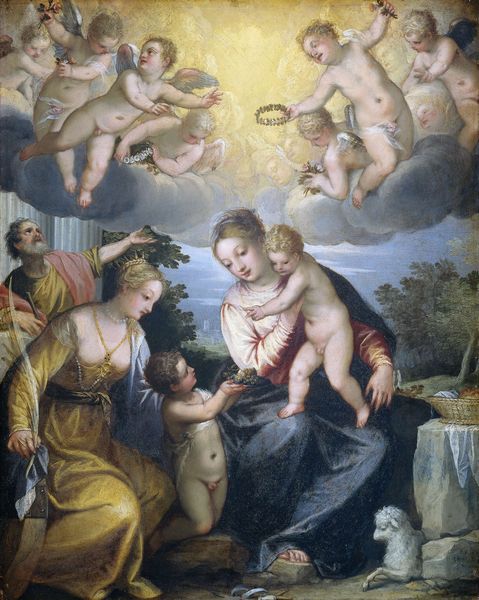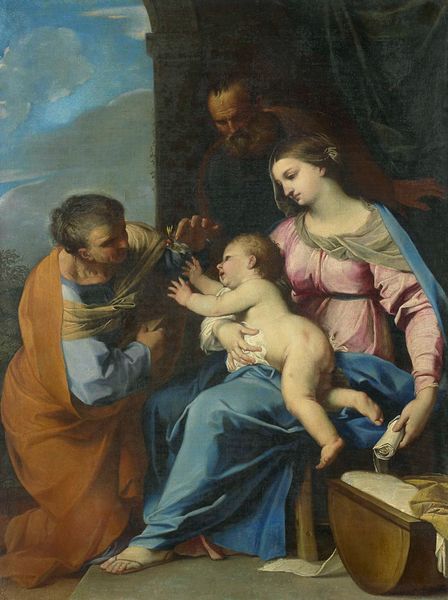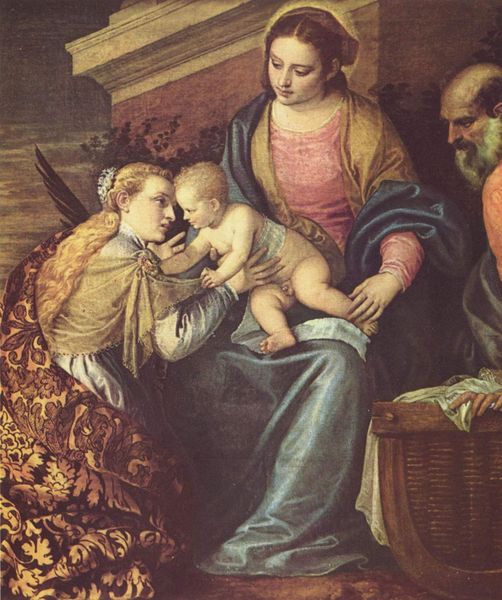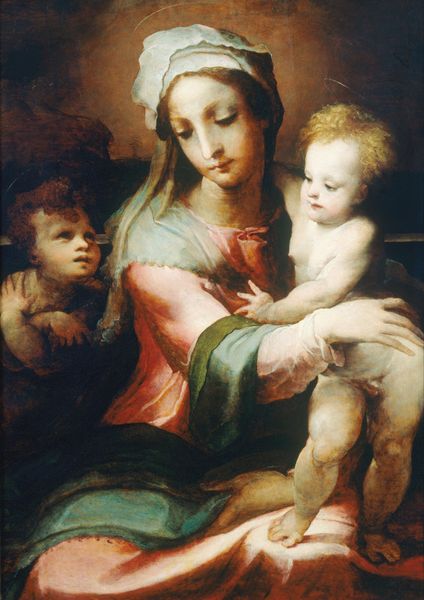
The Virgin and Child with the Infant St John the Baptist and Attendant Angels
0:00
0:00
painting, oil-paint
#
portrait
#
baroque
#
painting
#
oil-paint
#
figuration
#
oil painting
#
italian-renaissance
Copyright: Public domain
Editor: This oil painting, "The Virgin and Child with the Infant St. John the Baptist and Attendant Angels" by Giulio Cesare Procaccini, presents a tender scene. What strikes me most is the focused intimacy in their gazes. How do you interpret the power dynamics portrayed? Curator: Considering the patriarchal context, Procaccini, even while seemingly celebrating maternal love, reinforces the male gaze. The Virgin, surrounded by male figures and attendant angels, exists primarily as a mother, her identity subtly constrained by societal expectations. How do you think this painting engages with or challenges existing tropes around women and power? Editor: That's an interesting point. I hadn’t thought about the implicit constraints. I suppose I was seeing the softness and protection as a purely positive thing, but now I wonder if it subtly reinforces the idea of women needing protection. Curator: Exactly! Look at how the Virgin’s downward gaze directs our attention back to the male child. While seemingly tender, it also guides the viewer into a conventional narrative where male offspring holds the power. Does the inclusion of John the Baptist feel less a genuine inclusion of diverse identities and more of an assertion about male importance? Editor: It’s complex, isn’t it? Seeing it framed within the broader social constructs of the time makes the narrative far more nuanced than it initially appears. Thank you for sharing that context; it completely changes how I perceive the work. Curator: Absolutely! Engaging art from such perspectives illuminates the unspoken narratives and challenges assumptions about gender, identity, and power in the historical canon.
Comments
No comments
Be the first to comment and join the conversation on the ultimate creative platform.
